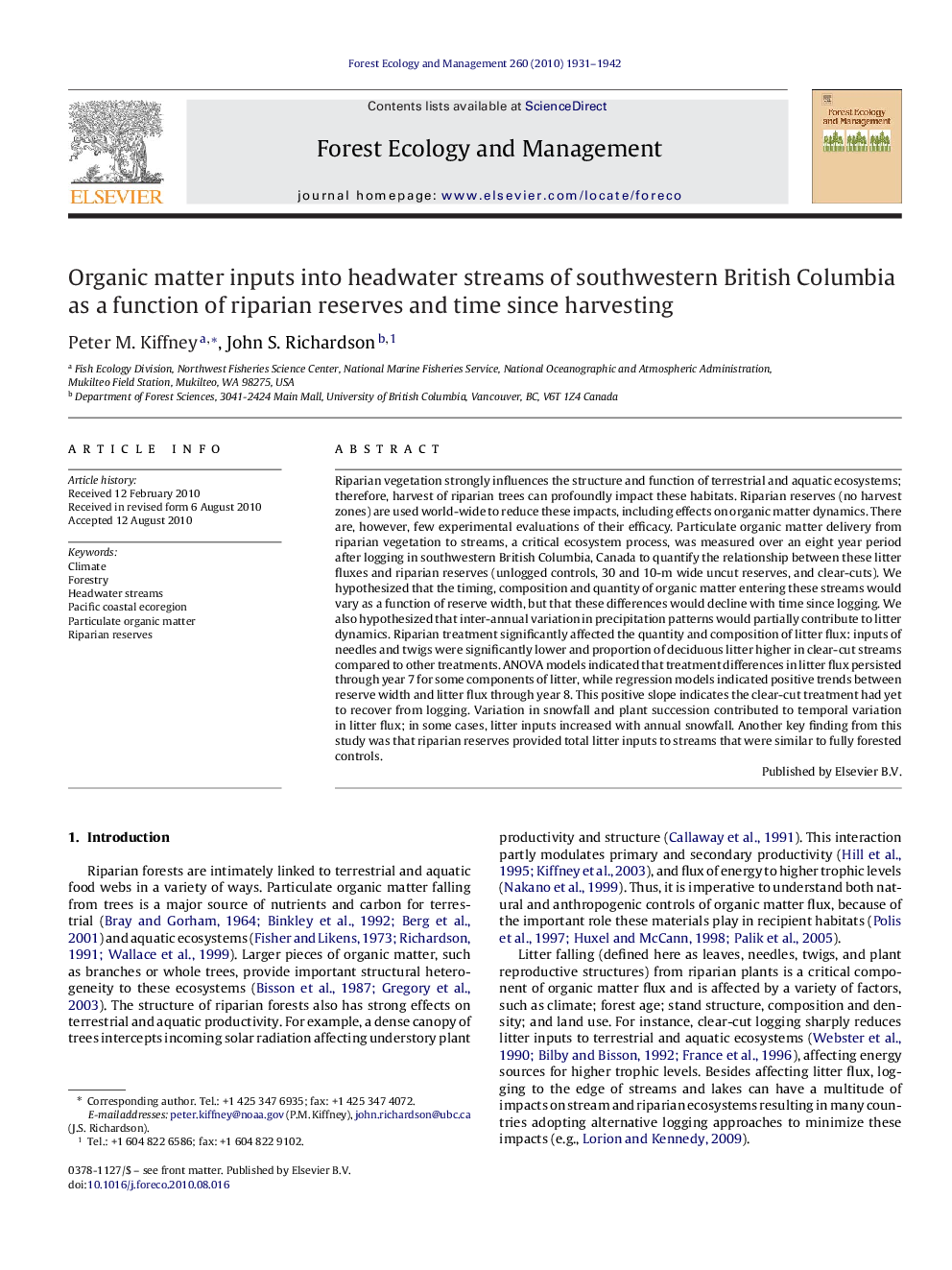| کد مقاله | کد نشریه | سال انتشار | مقاله انگلیسی | نسخه تمام متن |
|---|---|---|---|---|
| 88199 | 159290 | 2010 | 12 صفحه PDF | دانلود رایگان |

Riparian vegetation strongly influences the structure and function of terrestrial and aquatic ecosystems; therefore, harvest of riparian trees can profoundly impact these habitats. Riparian reserves (no harvest zones) are used world-wide to reduce these impacts, including effects on organic matter dynamics. There are, however, few experimental evaluations of their efficacy. Particulate organic matter delivery from riparian vegetation to streams, a critical ecosystem process, was measured over an eight year period after logging in southwestern British Columbia, Canada to quantify the relationship between these litter fluxes and riparian reserves (unlogged controls, 30 and 10-m wide uncut reserves, and clear-cuts). We hypothesized that the timing, composition and quantity of organic matter entering these streams would vary as a function of reserve width, but that these differences would decline with time since logging. We also hypothesized that inter-annual variation in precipitation patterns would partially contribute to litter dynamics. Riparian treatment significantly affected the quantity and composition of litter flux: inputs of needles and twigs were significantly lower and proportion of deciduous litter higher in clear-cut streams compared to other treatments. ANOVA models indicated that treatment differences in litter flux persisted through year 7 for some components of litter, while regression models indicated positive trends between reserve width and litter flux through year 8. This positive slope indicates the clear-cut treatment had yet to recover from logging. Variation in snowfall and plant succession contributed to temporal variation in litter flux; in some cases, litter inputs increased with annual snowfall. Another key finding from this study was that riparian reserves provided total litter inputs to streams that were similar to fully forested controls.
Research highlights▶ Particulate organic matter delivery from riparian vegetation to streams, a critical ecosystem process, was measured over an eight period after logging in southwestern British Columbia, Canada to quantify the relationship between these litter fluxes and riparian reserves (unlogged controls, 30 and 10-m wide uncut reserves, and clear-cuts). ▶ Riparian treatment significantly affected the quantity and composition of litter flux: inputs of needles and twigs were significantly lower and proportion of deciduous litter higher in clear-cut streams compared to other treatments. ANOVA models indicated that treatment differences in litter flux persisted through year 7 for some components of litter, while regression models indicated positive trends between reserve width and litter flux through year 8. This positive slope indicates the clear-cut treatment had yet to recover from logging. ▶ Variation in snowfall and plant succession contributed to temporal variation in litter flux; in some cases, litter inputs increased with annual snowfall. ▶ Another key finding from this study was that riparian reserves provided total litter inputs to streams that were similar to fully forested controls.
Journal: Forest Ecology and Management - Volume 260, Issue 11, 15 November 2010, Pages 1931–1942